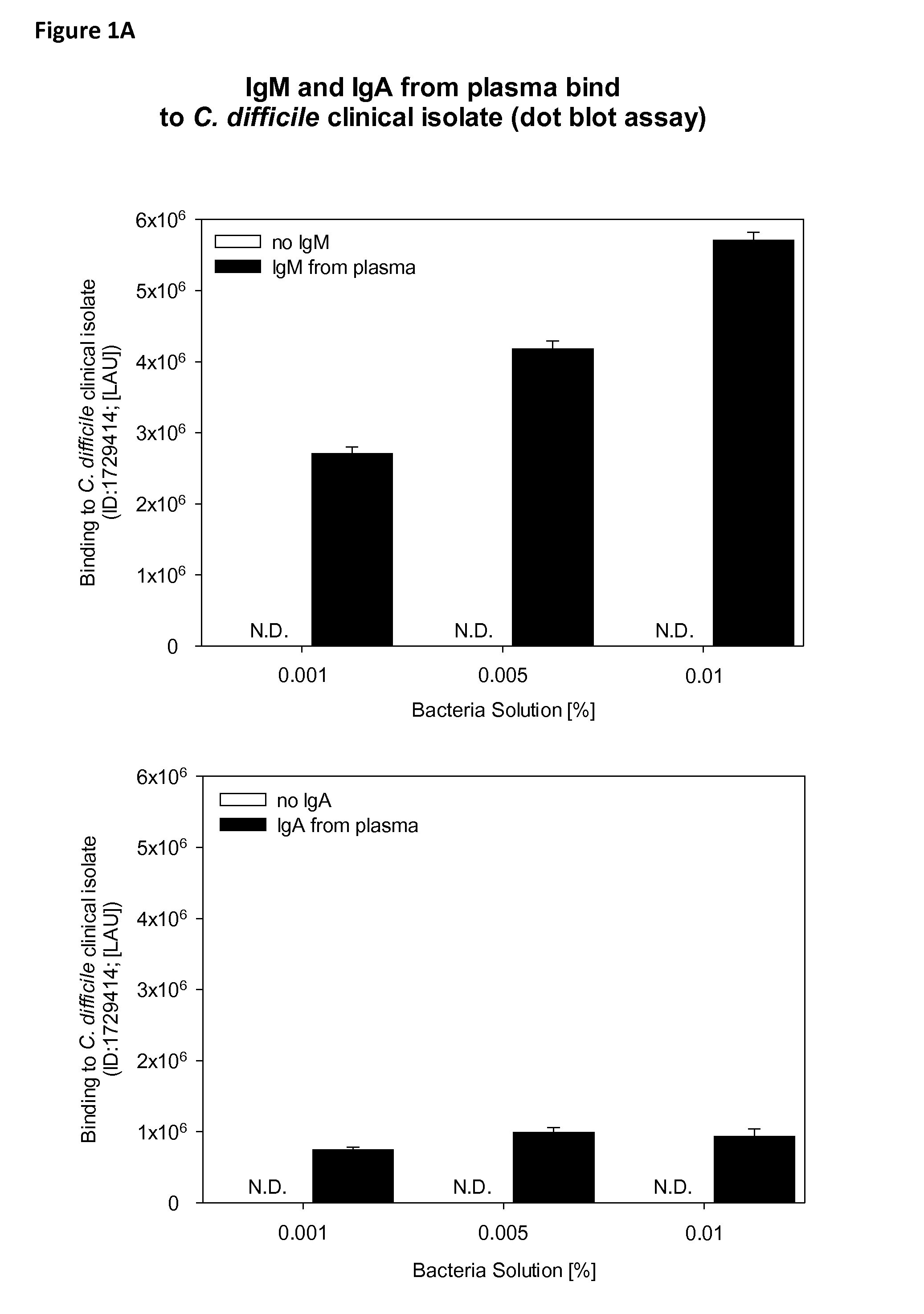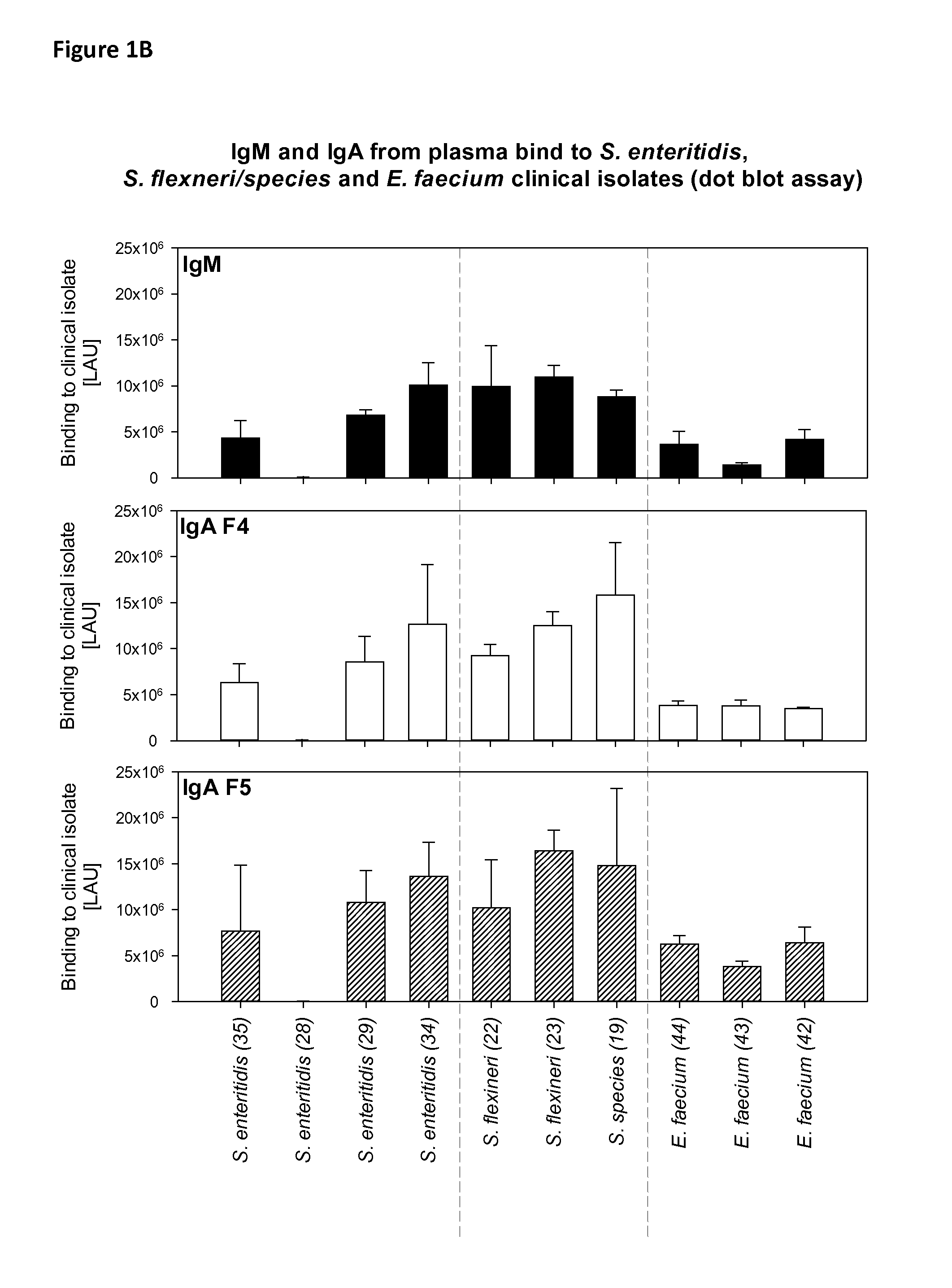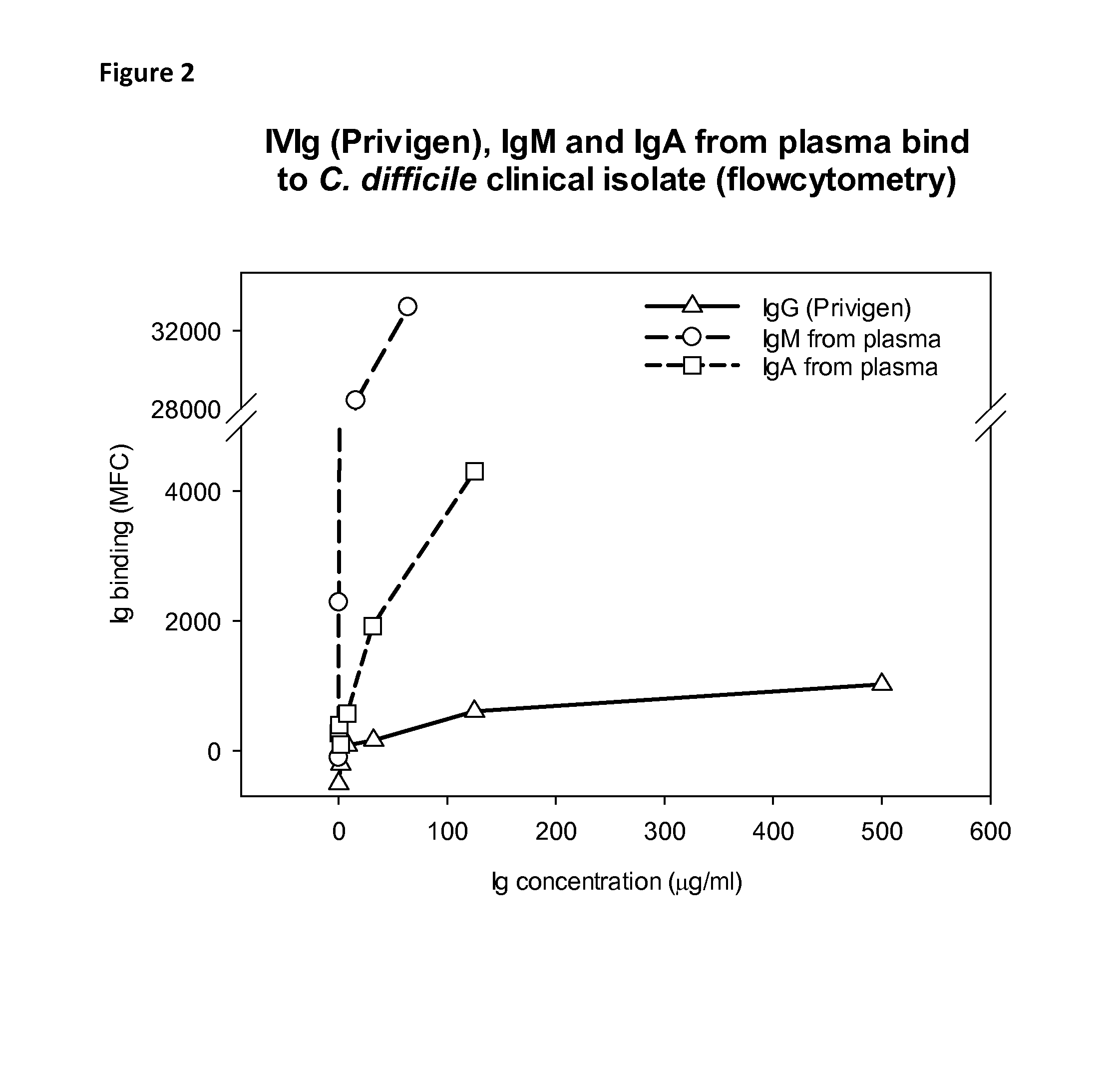Prevention of infection
a technology for preventing infection and preventing infection, applied in the field of prevention of infection, can solve the problems of reducing the efficacy of many currently used antibiotics, reducing the frequency or severity of disease, and causing chronicity
- Summary
- Abstract
- Description
- Claims
- Application Information
AI Technical Summary
Benefits of technology
Problems solved by technology
Method used
Image
Examples
example 1
Binding of IgM and IgA to C. difficile, S. enteritidis, S. flexneri / Species and E. faecium Bacteria (Dot Blot)
[0058]Binding of plasma derived immunoglobulins to clinical isolates of different bacteria was tested by dot blot.
Materials and Methods
[0059]1.1 IgA Production by Affinity Chromatography from Plasma and by Sequential Elution of an Anion Exchange (MPHQ) Column
[0060]Total human plasma IgA was purified from cryo-depleted pool plasma by affinity chromatography using CaptureSelect Human IgA resin (Bioaffinity Company BAC, Naarden, Netherlands) according to the resin manufacturer protocol. Briefly, cryo-depleted pool plasma, was diluted in phosphate buffered saline (PBS) to an IgA concentration of approximately 1 mg / mL and then loaded onto a PBS-equilibrated CaptureSelect Human IgA column, without exceeding the IgA binding capacity of the column. After loading the column was washed with PBS, and IgA was eluted with glycin buffer at pH 3. The eluate was adjusted with Tris to pH 4.5...
example 2
Binding of Immunoglobulins to C. difficile Bacteria by Flow Cytometry
[0073]To confirm the specificity of antibody binding to surface molecules of C. difficile bacteria the results obtained by dot blot were confirmed by flow cytometry.
[0074]A patient sample of Clostridium difficile (ID 1729414) stored in liquid nitrogen in PBS containing 30% glycerol was thawed and grown under anaerobic conditions overnight at 37° C. in thioglycollate bouillon. Bacteria were washed twice with PBS by centrifugation at 2000 g during 10 min at room temperature. The concentration was adjusted to 2×106 bacteria / mL by measuring the absorption of the suspension at 650 nm using the same buffer and using the relationship that extinction of 1.1 at 650 nm corresponds to 1×109 CFU / mL.
[0075]To assess the amount of immunoglobulin binding to the bacteria 250 microL of the bacteria suspension was pipetted into polypropylene tubes followed by 250 microL of the immunoglobulin product to be assessed. Immunoglobulin sam...
example 3
Binding of IgA Preparations to Toxin A and B of C. difficile by ELISA
[0079]Binding of various preparations of plasma-derived IgA to Toxins A and B of C. difficile was tested by ELISA.
[0080]Microplates (Nunc PolySorp, Fisher Scientific, Pittsburgh, Pa.) were coated overnight at 4° C. with 0.5 microG / mL toxin A, 2 microG / mL toxin B in carbonate-bicarbonate buffer (pH 9.6) (50 microL per well). After washing with PBS supplemented with 0.05% tween 20 (PBST) (200 microL per well), plates were saturated with 1% BSA / PBST (200 microL per well) for 1 hour followed by washing. Test samples, diluted in 0.1% BSA / PBST (100 microL per well), were incubated for 1 hour and tested in triplicate. Bound antibodies were detected using horseradish peroxidase-conjugated anti-immunoglobulin A (Dako Corporation, Carpinteria, Calif.) diluted 1:1000 in PBST / 0.1% BSA (100 microL per well, 1 hour). After washing with PBST ×3 the substrate 3,3′,5,5′-tetramethylbenzidine (Sigma) was added (50 microL). The reacti...
PUM
| Property | Measurement | Unit |
|---|---|---|
| Time | aaaaa | aaaaa |
| Composition | aaaaa | aaaaa |
| Polymeric | aaaaa | aaaaa |
Abstract
Description
Claims
Application Information
 Login to View More
Login to View More - R&D
- Intellectual Property
- Life Sciences
- Materials
- Tech Scout
- Unparalleled Data Quality
- Higher Quality Content
- 60% Fewer Hallucinations
Browse by: Latest US Patents, China's latest patents, Technical Efficacy Thesaurus, Application Domain, Technology Topic, Popular Technical Reports.
© 2025 PatSnap. All rights reserved.Legal|Privacy policy|Modern Slavery Act Transparency Statement|Sitemap|About US| Contact US: help@patsnap.com



